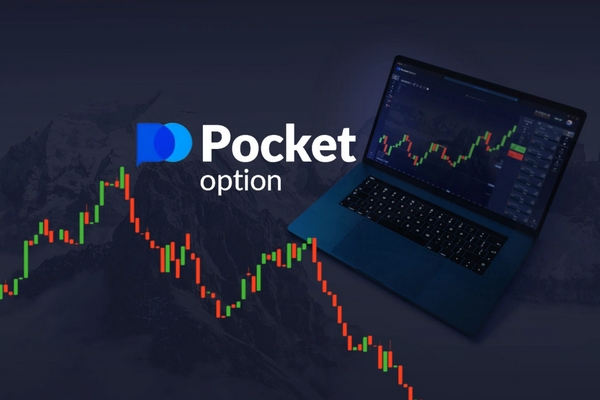
Mastering Trading Pocket Option: A Comprehensive Guide
In the world of financial trading, Trading Pocket Option trading Pocket Option has emerged as a popular platform for both novice and experienced traders. With its user-friendly interface and diverse range of trading options, Pocket Option provides an accessible entry point into the realm of binary options trading.
What is Trading Pocket Option?
Trading Pocket Option involves the buying and selling of binary options – a form of financial instrument that provides traders with a fixed payout based on the outcome of a specific event. The simplicity of binary options lies in their ‘yes or no’ nature; traders predict whether the price of an asset will rise or fall in a predetermined timeframe.
Founded in 2017, Pocket Option has quickly grown in popularity due to its unique features and responsive trading environment. Unlike traditional trading platforms, Pocket Option focuses on speed and ease of use, aiming to cater to traders who value quick decisions and immediacy in trading.
Getting Started with Pocket Option
To begin trading on Pocket Option, traders need to create an account. The registration process is straightforward; users need to provide some basic information and verify their identity. Once the account is set up, traders can fund their accounts using various payment methods—credit cards, cryptocurrency, and electronic wallets are all accepted.
The Interface
The user interface of Pocket Option is designed for simplicity and efficiency. The main dashboard provides quick access to all necessary features—trading charts, asset selection, and account management tools are all laid out clearly. This intuitive design allows traders to focus on making informed decisions rather than navigating through complex menus.
Asset Selection

One of the standout features of Pocket Option is its wide variety of assets. Traders can choose from multiple categories, including stocks, currencies, commodities, and cryptocurrencies. This diversity allows for a broad trading experience, accommodating various trading strategies and risk appetites.
Understanding Binary Options
At its core, trading binary options revolves around predicting market movements. Traders select an asset, choose an expiration time, and predict whether the asset will end ‘in the money’ (above the strike price) or ‘out of the money’ (below the strike price). If traders predict correctly, they receive a predetermined payout; if not, they lose their initial investment.
Successful binary options trading relies on market analysis—both technical and fundamental. Traders utilize charts, indicators, and news events to assess potential price movements and develop their strategies.
Strategies for Trading Pocket Options
Trend Following
One popular strategy among traders is trend following, which involves analyzing market trends and executing trades in the direction of the prevailing trend. Traders study charts to identify patterns and utilize indicators such as moving averages to confirm their analyses.
Range Trading
Range trading is another effective strategy that focuses on identifying support and resistance levels. Traders buy when the price approaches support levels and sell when it reaches resistance levels, anticipating that prices will continue to oscillate within the established range.
News Trading

For those who prefer a more dynamic approach, news trading might be suitable. This strategy involves making trading decisions based on upcoming economic reports, earnings announcements, and other news events that could impact asset prices. Successful news traders are adept at making quick decisions as news breaks—timing is crucial in this fast-paced strategy.
Risk Management
Every trader must prioritize risk management as part of their trading strategy. With the potential for significant gains comes the risk of losses; thus, understanding and managing risk is crucial for long-term success. Traders can implement several strategies to manage risk effectively:
- Diversification: By investing in multiple assets, you can reduce the impact of a single loss on your trading portfolio.
- Setting Stop-Loss Orders: Placing stop-loss orders allows traders to minimize losses by automatically closing trades at predetermined levels.
- Using Proper Position Sizing: This involves adjusting the size of each trade relative to your total capital, ensuring that you don’t risk too much on a single trade.
Common Mistakes to Avoid
Even experienced traders can fall into traps that lead to losses. Here are some common mistakes to avoid:
- Overtrading: Many traders feel the need to constantly be in the market, leading to fatigue and poor decision-making. Trading is not about quantity; it’s about quality.
- Chasing Losses: Some traders try to recover losses by making impulsive trades, which often leads to further losses. It’s important to stick to your strategy and not let emotions dictate your trading decisions.
- Neglecting Analysis: Failing to analyze market conditions can result in blind trading. Always conduct thorough analysis before making trading decisions.
Conclusion
Trading Pocket Option offers an exciting opportunity for individuals looking to delve into the world of financial trading. The platform’s user-friendly interface, diverse asset selection, and unique features set it apart from traditional trading environments.
However, success in trading requires not only knowledge of the mechanics of binary options but also the implementation of solid strategies and effective risk management. As you embark on your trading journey with Pocket Option, remember to educate yourself continually, avoid common pitfalls, and stay disciplined in your approach.
With the right mindset and strategies, trading Pocket Option can be both a profitable endeavor and a thrilling experience in the financial markets.